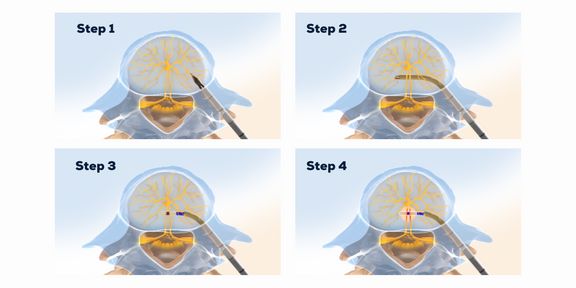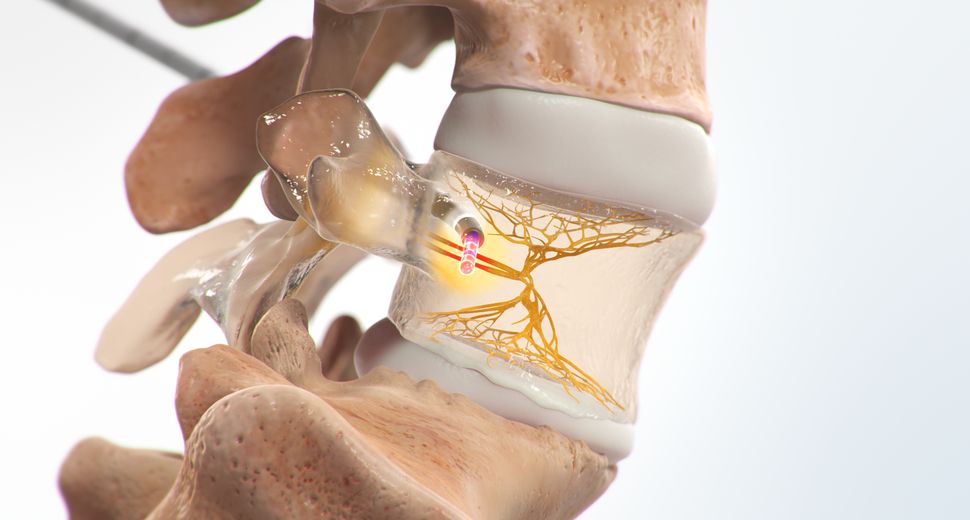Chronic low back pain can disrupt your daily life and take a toll on both your physical and mental well-being. Factors like a sedentary lifestyle, genetics, and aging make this condition all too common — affecting nearly 30% of U.S. adults in 2018 alone.
At The South Bend Clinic, we offer the Intracept® procedure, a minimally invasive, long-lasting solution for vertebrogenic pain. By targeting the root cause, Intracept® helps patients find real relief and regain mobility.
What is Vertebrogenic Pain?
Vertebrogenic pain is a distinct type of chronic low back pain caused by damage to vertebral endplates, the tissue that covers the top and the bottom of each vertebral body and separates it from the disc. Disc degeneration, and the wear and tear that occurs with everyday living, produces stresses on the endplates that damage them, leading to inflammation and vertebrogenic pain. The basivertebral nerve (BVN), found within the vertebrae, carries pain signals from the inflamed endplates to the brain.
How Do Patients Describe Vertebrogenic Pain?
The disc and endplate are both part of the anterior spinal column and produce similar low back pain symptoms. However, endplate pain is associated with distinctive changes on routine MRI called Modic changes. Patients who find relief from the Intracept Procedure often describe pain in the middle of their low back that is made worse by physical activity, prolonged sitting, and bending forward or with bending and lifting. ¹
The basivertebral nerve (BVN) enters the bone at the back of the vertebral body (the bones in your spine) and “branches” to the endplates (that are located at the top and the bottom of each vertebral body). When endplates are damaged, these nerve endings increase in number and “pick up” pain signals that are then sent to the brain through the BVN. The Intracept® Procedure relieves vertebrogenic pain by heating the basivertebral nerve (BVN) with a radiofrequency probe to stop it from sending pain signals to the brain.
How does the Intracept® Procedure Work?
The Intracept Procedure is a minimally invasive, implant free procedure that preserves the overall structure of the spine. The Intracept Procedure is a same-day, outpatient procedure. Patients are under anesthesia, and the procedure generally lasts an hour. The procedure is FDA-cleared and is proven in multiple studies to be safe, effective, and durable. ²’³

How Long Does Pain Relief Last following the Intracept® Procedure?
Clinical evidence demonstrates the majority of patients experience significant improvements in function and pain 3‑months post procedure that are sustained more than 5 years after a single treatment. ²
How Do I Know If I’m a Candidate for Intracept®?
Patients who have experienced chronic low back pain for at least six months, have tried conservative treatments without success, and have MRI findings showing Modic changes — which indicate vertebral endplate damage and inflammation — may be candidates for the Intracept® Procedure. As with any medical procedure, potential risks should be carefully discussed with a healthcare provider to determine if Intracept® is the right solution for long-term pain relief.


